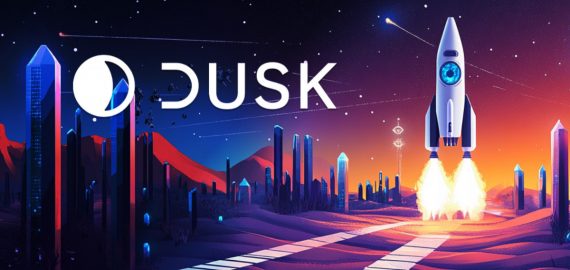Safe, Secure, and User-Friendly: How Somnia’s Metaverse Browser is Lowering Entry Barriers Within Web3


In Brief
Ignacio Pastor Sánchez, Head of Software Engineering at Somnia, discusses the company’s innovative approach to the Metaverse, addressing interoperability challenges and AI integration.

In this insightful conversation at the Hack Seasons Сonference, Ignacio Pastor Sánchez, Head of Software Engineering at Somnia, shares the company’s innovative approach to the Metaverse. From interoperability challenges to the integration of AI, Sánchez offers a glimpse into the future of digital experiences and Somnia’s role in shaping it.
Many entrepreneurs are drawn to their field by a specific moment or event. What was your journey to Web3?
Actually, the specific moment that was exciting was when Beeple sold his NFT at Christie’s for 69 million dollars. That was all over the news here in Spain. I already knew about Bitcoin and was familiar with some cryptocurrency trading because I had some friends in the field. But that was the moment when I thought, “Okay, this is something interesting.”
From then on, I started working especially on NFT projects. My background is in many things, but I found it a bit frustrating at the time because it was very hard for companies to actually gather and provide the data needed to do their work properly.
Cryptocurrency was basically a fast-moving and very creative industry. There wasn’t so much red tape, so it was very fitting for me as a freelancer at the time. I was having way more fun with Web3 than with machine learning, for example.
Why did you decide to focus on metaverse and not on finances like other companies?
Well, actually, the blockchain side of Metaverse is a different kind of finance. It’s mostly about creating a market for digital assets. However, we focus more on Metaverse because most of the team come from the video game industry. So it’s more obvious for us to focus on Metaverse, addressing what’s wrong with ownership of digital assets in these isolated islands that we have right nowcomesh different studios, etc.
I still see that finance is quite related to the Metaverse. It’s just that Metaverse is more specific or concrete. Finances tend to be very abstract. With Metaverse, you know what digital assets we’re talking about because you’re familiar with that from the video game world. But you’re bringing it to the financialization of it, enabling users to actually own those assets.
Do you think there are ways we can attract people from traditional industries to the Metaverse?
I think so, yes. Especially in the entertainment industry or, of course, the video game industry, but that’s not that traditional. There are a lot of possibilities for 3D experiences in education and training in traditional companies—for example, simulations of industrial settings where the Metaverse can have a very important role.
Also, I personally feel like the logical evolution of these meetings that we’re having would be something more similar to a 3D experience where you actually kind of trick the brain into being more in touch with the person that’s in front of you rather than a plain screen.
How does Somnia’s vision of the “Metaverse Computer” differ from existing metaverse platforms, and what unique advantages does it offer?
With the Metaverse computer, we’re focusing on two areas. One is interoperability. Right now, every Metaverse company does things their own way. We are very focused on creating a set of standards that are open and that other developers who have no relation with us could use.
Then, we are focused on providing the computing infrastructure that this kind of experience needs. We find that there is no solution on the market that actually has the performance requirements we think are necessary.
So we are going to provide the infrastructure for building on top of it but with open standards. It doesn’t necessarily need to be us building those experiences, but we are opening up to other companies and developers.
What unique features does the Somnia metaverse browser offer, and how does it enhance user experience compared to traditional web browsers?
Right now, the current form of the Metaverse browser is basically a limited browser. In a web browser, you can go wherever. The Metaverse browser, let’s say, is a closed environment where we are abstracting away the wallet interactions from the user. We generate a wallet for you and let you interact with blockchain, but the user most of the time is not aware of it.
It was our thesis that sometimes crypto and dealing with MetaMask, etc., is a bit scary and a high barrier for users. So, it serves a double purpose. You don’t need to actually interact with all of those scary messages like, “Are you sure you want to interact with this?” Because it’s a closed set of applications that we provide, you could say that it’s like a safe environment, so you don’t need to worry about going to too few sites or dangerous places where you could lose your assets.
As you said, AI is overtaking Metaverse, but do you think if we combine AI and Metaverse, it will be a second chance for the Metaverse?
Yeah, I think there are a lot of applications for AI in the Metaverse. I’m thinking specifically about lowering the cost of creating new experiences. There have been a lot of new developments in 3D generation with AI lately. Basically, the generation of assets is one of the highest hurdles when creating experiences. You need to create new stuff, and 3D modeling is not an easy task. I think that AI can help a lot with that.
AI can also help a lot with content moderation and safety. Within the Metaverse, there are many applications where both technologies complement each other.
How do you envision the future of cross-platform interoperability in the metaverse, and what steps is it taking to achieve this vision?
I think that is our final target. The idea here is that we want to have a set of open standards, kind of like the way the EVM ecosystem has been successful because they were successful in getting some standards that everyone agrees on and then you can build on top of those standards.
So, you don’t need to actually agree with a certain developer on how to do things. You’re just getting this standard, and then you can build on top of that. That’s the way that we see interoperability. There is a baseline of standards where we all agree, and then we can build on top of each other and compete in that area. However, ensuring that you always have at least a minimum amount of interoperability is important.
Can you discuss some of the most exciting metaverse experiences or applications currently being developed on the Somnia platform?
We’ve had successful partnerships where we have these edition hotshots and other Metaverse experiences where we gather many people to play together. We also have our AMAs, which allow us to get the community into these 3D environments. And it’s fun because it’s very curious, even if it’s just seeing yourself in a 3D environment where you can move and interact with people. It gives you a lot of the feeling of getting more connected with people.
We are going to release a new project that I’m very excited about, which is Metaverse Playground where you can create a mini Metaverse of your own for friends and get that same experience in a self-serve manner. So that has been very exciting and I think that’s going to be very cool for users.
How do you envision the evolution of digital identity and avatar systems in the Metaverse?
We envision that as basically a network of different assets that tie back together to one single person. So right now you have NFTs that identify you as part of, let’s say, a tribe or the Moonbirds, whatever. The idea for us on identity is linking all of those assets. We don’t care if it’s like different wallets, different NFTs, etc., but the idea is having a structure basically as a graph.
Wherever you are, whatever Metaverse you’re going to, you have one entry point in any part of that graph, but we can track your entire set of identities. We all have different identities – our professional self, our family self, etc.
So the idea here is even if you have different assets that identify you as an individual, we want to make the relation to all of those assets. We want to have a complete picture of who you are on the blockchain or in the Metaverse. And then we can do that in a safe manner as well, not exposing your assets, of course.
Can you discuss the company’s plans to support and integrate virtual economies and marketplaces?
One of the advantages of us having this open set of standards and partnering with other companies to make it easier for creators to develop new assets is that, of course, we want to give incentives for these creators to create new assets that can then be used in different experiences. So that’s one of the key pillars of our product.
We’re allowing users or giving a set of standards for users to create an object and then put it on sale. Or rather than the object itself, the right to use that object within a given experience. It’s also very important for us to have these marketplaces and economic interactions cross-chain because it would be against the ethos of Web3 to just lock in this economy within our chain. So, we really defend the idea that these marketplaces should all be cross-chain. You should have the right to make transactions wherever you want.
How do you see the emergence of traditional industries, like real estate, travel, and entertainment, in the Metaverse?
Honestly, there are some traditional industries where Metaverse makes sense and others where it doesn’t. For example, I don’t think that real estate should be translated to the Metaverse, because by definition, the amount of land that you can have is infinite, almost only limited by computation and storage power.
But for travel and entertainment, I think there is a real opportunity there. As I said, Metaverse experiences, at least on a personal level, make you feel more connected with the people on the other side.
For entertainment, we had some experiences with Major League Baseball through a partner, and it’s very fun to see people actually interacting, like fans of the sport, being in the Metaverse, seeing it on the screen from within the Metaverse, but then interacting among themselves and actually making friends. So, there is a big opportunity for disruption in entertainment, sports, and even travel. It needs to be pushed.
What do you think is the current topic that is not covered enough by the media or by conferences?
Honestly, most of the time I would say it’s regulation, because it’s boring and nobody wants to hear about regulation. Whenever I go to a conference, it’s always the last speaker talking about regulation. And everyone’s already tired or already leaving. And I think it’s really important for us to know where we’re going in terms of regulation.
Disclaimer
In line with the Trust Project guidelines, please note that the information provided on this page is not intended to be and should not be interpreted as legal, tax, investment, financial, or any other form of advice. It is important to only invest what you can afford to lose and to seek independent financial advice if you have any doubts. For further information, we suggest referring to the terms and conditions as well as the help and support pages provided by the issuer or advertiser. MetaversePost is committed to accurate, unbiased reporting, but market conditions are subject to change without notice.
About The Author
Victoria is a writer on a variety of technology topics including Web3.0, AI and cryptocurrencies. Her extensive experience allows her to write insightful articles for the wider audience.
More articles

Victoria is a writer on a variety of technology topics including Web3.0, AI and cryptocurrencies. Her extensive experience allows her to write insightful articles for the wider audience.

















































